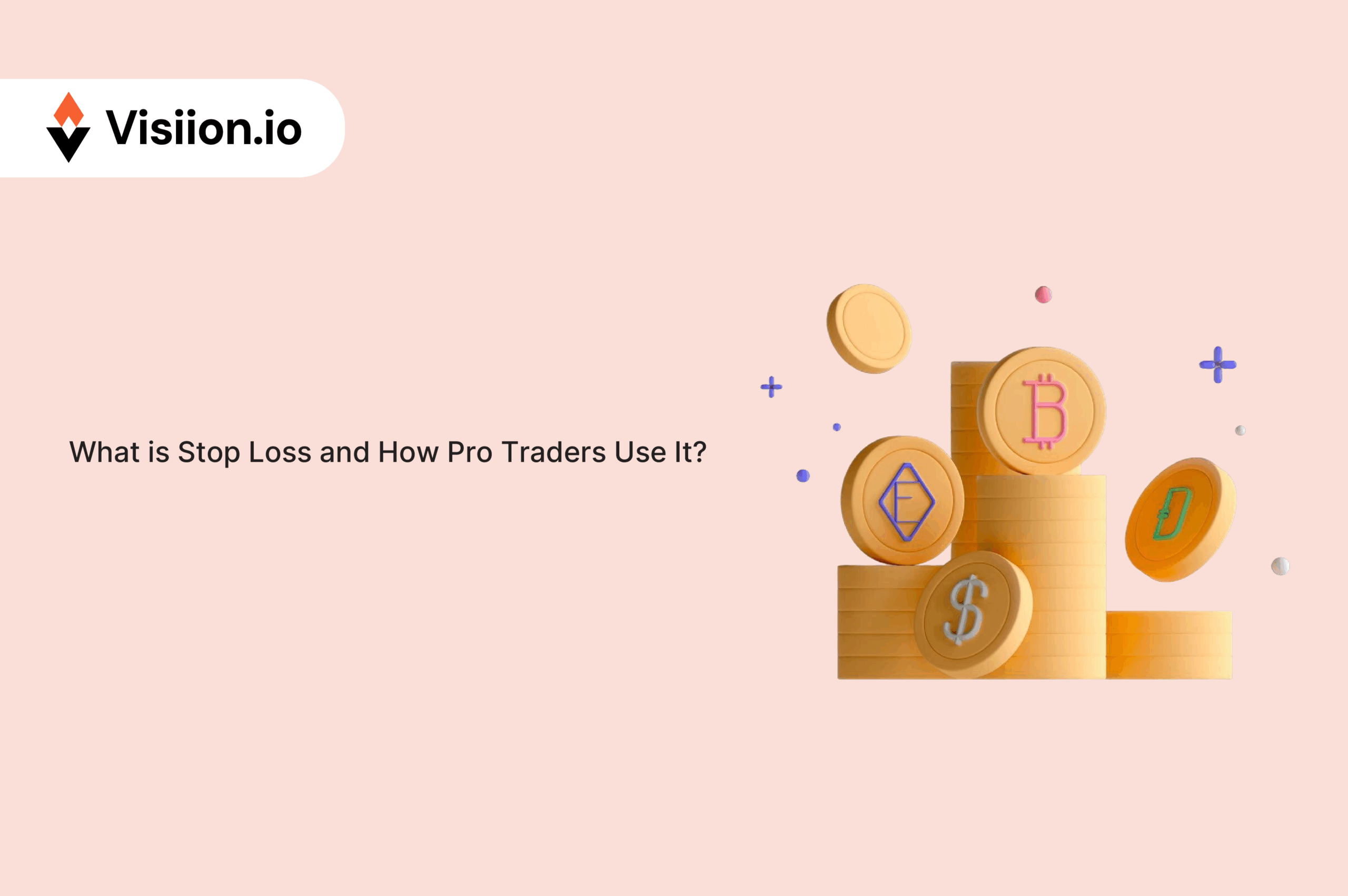In trading, the term “stoploss” refers to a predefined price point that automatically closes a position to limit potential downside. Traders set this point while placing an order or after opening a position. It acts as a trigger to exit when the asset price reaches a certain level.
The keyword “what is stoploss” carries weight across all asset classes. In crypto trading, where price movements often swing widely within minutes, this concept gains even more significance. Traders use it as a tactical control to manage exposure across volatile tokens and pairs. The primary idea revolves around protecting capital from sudden shifts.
Exchanges integrate stop-loss orders into their interface. These tools work in sync with market orders, limit orders, and even trailing features. Most platforms also offer variations like stop-market and stop-limit orders. Each of these comes with its own logic, but the core principle remains consistent: exit automatically once the price crosses a set level.
Different Types of Stoploss Orders
Understanding what a stop loss is also means grasping the variations it comes with. Traders can choose from a range of options depending on their strategy, timing, and position size.
Stop-Market Order: This is the most straightforward option. Once the price hits the stop point, the system executes a market order. This guarantees execution but may fill at a slightly different price, especially in thin markets.
Stop-Limit Order: This offers more control. When the trigger price hits, a limit order goes live. Traders set both the trigger and the limit price. If the market moves fast, though, there is a chance the order stays unfilled.
Trailing Stoploss: Popular among trend followers, this option trails the price by a fixed distance. If the market keeps moving in favor of the trade, the stop adjusts upward (for longs) or downward (for shorts). Once the market reverses by the set margin, the trade exits.
Time-Based Stoploss: Some traders use time as a trigger rather than price. If a position stays open for a set duration without making expected progress, the stop activates. It reflects a mindset where time is treated as a cost.
Why Pro Traders Depend on Stop Loss?
Professionals in the trading world treat the stop-loss mechanism as a core component of risk control. Many pros describe stoploss as a boundary, one that defines the edge of their planned risk zone.
They don’t treat it as optional. Instead, stop-loss levels get locked in before any trade goes live. Once the stop is in place, pros stick to it regardless of market noise. This approach removes the urge to react emotionally during drawdowns.
Pro traders also size positions around the stop loss. Instead of throwing fixed capital into every trade, they reverse-engineer their size based on how far the stop is from the entry. This keeps their portfolio exposure balanced, regardless of volatility.
In high-frequency environments, automated systems embed stop-loss rules into bots and algorithms. The idea is to exit before small mistakes evolve into major losses. Even in manual setups, advanced traders tie stop levels to technical zones like previous lows, Fibonacci retracement points, or moving average levels.
What is Stoploss to a Mindset?
Beyond numbers, stop loss plays a big role in trading psychology. Top performers associate it with discipline. They view it as a commitment to their plan. This helps them stay focused even when price action turns unpredictable.
Once the question “what is stoploss” shifts from mechanics to mindset, trading behavior changes. Professionals keep losses small so that no single event distorts their entire capital base. Instead of chasing wins, they protect their ability to participate in the next opportunity.
Pro traders accept exits without regret. A well-placed stop loss signals a good decision, even if the market recovers later. Over time, this reinforces patience and detachment, two underrated strengths in the crypto scene.
How Pros Set Their Stops?
A lot of skill goes into choosing the right stop-loss level. It’s not about picking random percentages. Instead, traders align stops with the market structure.
They look at:
- Previous swing highs or lows
- Volatility bands like Bollinger or ATR (Average True Range)
- Support and resistance zones
- Moving averages
- Imbalance zones and price inefficiencies
Each of these levels acts like a logic anchor. Pro traders pick stop-loss points where the market would clearly invalidate their trade idea. That way, if the stop hits, they learn something. If it holds, the market confirms its bias.
Experts also avoid placing stops where everyone else places them. Known as “stop hunting zones,” these areas attract large liquidations. To bypass these traps, experienced traders push stops slightly wider or layer them in unusual zones.
What is Stoploss in Fast-Moving Crypto Markets?
The crypto market doesn’t pause. Assets trade around the clock, across borders, without centralized oversight. That makes stoploss even more crucial. Traders cannot monitor screens 24/7, so automated exits create peace of mind.
During major events, like Bitcoin ETF announcements, Ethereum upgrades, or high-impact lawsuits, volatility spikes. These moments often trigger big price swings in seconds. Without a stop loss, open positions face unpredictable exposure.
Pro traders also adapt stop-loss logic based on the asset. Illiquid tokens call for wider buffers. Highly correlated pairs may follow Bitcoin’s moves. In these cases, stops must account for indirect volatility.
Stoploss vs. Manual Exits: What Sets the Pros Apart?
Manual exits rely on timing. That means constant monitoring. Even skilled traders find it tough to react with precision under pressure. That’s where stop-loss rules outperform instinct.
What is stoploss if not a decision made in calm? Pro traders make those decisions at the time of entry, long before any panic sets in. This keeps the trade clean and unemotional.
Many professionals treat the stop as a contract. It’s part of the setup, baked into the trade idea. Whether they use a fixed-point, trailing, or volatility-adjusted stop, it removes second-guessing. That confidence frees up mental bandwidth for spotting the next setup.
Risk-Reward Framing with Stoploss
Trading without clear risk boundaries turns outcomes into guesswork. Professionals approach trades using a risk-reward mindset. That means knowing how much they’ll lose before figuring out how much they might gain.
A common ratio is 1:2 or higher. That means risking one unit to aim for two. The stoploss defines the risk, while the profit target defines the reward. This simple framing keeps the math on the trader’s side, even when win rates drop.
In high-volatility environments, pros reduce position size but keep their stop-loss logic intact. This flexibility allows them to adapt across markets without compromising consistency.
Common Myths Around Stop Loss
Many retail traders associate stop loss with fear. But pros treat it as a structure. They see it as a non-negotiable part of capital survival.
Another myth suggests that stop-loss orders trigger losses unnecessarily. In reality, they cap potential downside and create room to grow. Instead of blocking profit, they protect it.
There’s also the belief that stop losses always work the same way across exchanges. That’s far from true. Execution speed, slippage, and order book depth all affect how effective a stop loss performs. Pro traders stay aware of these platform-level nuances.
Historical Lessons: What is Stoploss in Context?
Looking back at major crypto crashes, like the 2018 Bitcoin drawdown or the Terra Luna collapse, stoploss stands out as a key defense. Traders who used predefined exits avoided major capital erosion.
During bull runs, when euphoria kicks in, stop losses also act as a stabilizer. It stops traders from overextending or holding through major retracements. The idea isn’t to avoid risk but to manage it in a way that supports long-term participation.
Even during flash crashes, well-set stop-loss orders can preserve funds for the next wave. Some exchanges even report that traders who use automated risk controls show higher retention and capital growth over time.
Stop Loss in Strategy Design
For systematic traders, the stop loss isn’t a reaction tool; it’s a design feature. Backtesting always includes exit criteria. Performance metrics like drawdown, profit factor, and recovery time hinge on how clean the stop rules behave.
Many algo traders tweak stop-loss logic per strategy. Momentum systems use tighter stops. Mean-reversion systems allow wider ranges. In both cases, the rule isn’t negotiable.
Even discretionary traders build routines around stops. Their playbook defines where stops go, how they adjust them, and under what conditions they tighten or widen. This process-driven approach prevents random decisions.
Future Trends in Stoploss Tools
With AI and analytics entering the trading space, stop-loss technology is evolving. Smart stop systems now adjust in real time, based on volatility and sentiment indicators. These tools adapt levels without manual input.
Some exchanges offer layered stop systems, combining price-based and indicator-based logic. Others integrate trailing logic with machine learning. These innovations bring more accuracy and reduce noise-based exits.
Pro traders already test these tools in sandbox environments. As crypto markets mature, stoploss design will grow more intelligent, blending old-school principles with modern data.
What is Stoploss to a Trader’s Career?
Across all the strategies, timeframes, and platforms, one pattern remains. Every long-term trader who survives multiple market cycles respects the stop loss. It’s less about fear and more about control.
Whether embedded in bots or applied manually, the stoploss keeps risk where it belongs, in the plan. That’s what sets pros apart. They don’t rely on predictions. They define their exits, commit to them, and move forward with clarity.
So, what is a stop loss? It’s a decision maker. A trader’s line in the sand. A reset button. And above all, a survival tool that makes the next trade possible.









